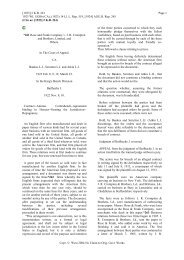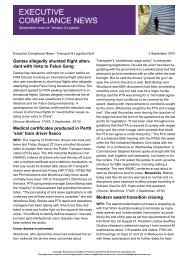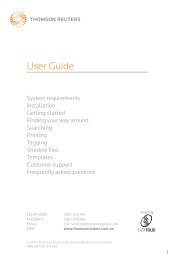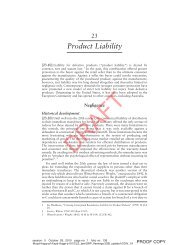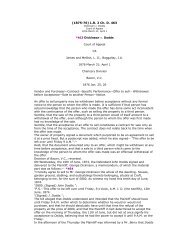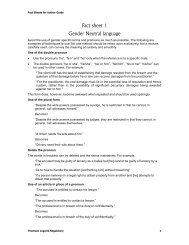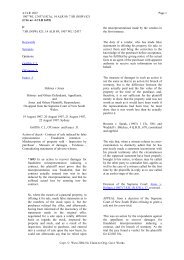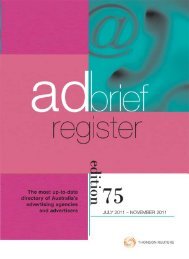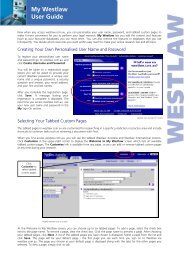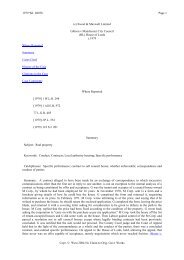[1961] 1 Q.B. 31 Page 51960 WL 18924 (CA), [1960] 3 All E.R. 332, [1960] 3 W.L.R. 504, (1960) 104 S.J. 704(Cite as: [1961] 1 Q.B. 31)FN3 (1871) L.R. 6 Q.B. 597.These two false premises in Professor Goodhart's article lead to the test whichhe propounds, and which has been incorporated by the judge in his judgment - howought the promisee to have interpreted the promise. Hardman v. Booth [FN4] wasrelied on in support of that test, but that case depended on the law of agency;all it decided was that where a person represents himself to be an agent, and hehas no authority to contract, there is no contract. The remedy of the aggrievedparty is to sue the agent for breach of warranty of authority.FN4 (1863) 1 H. & C. 803; 158 E.R. 1107.The Pothier test has always been accepted: see per Fry J. in Smith v.Wheatcroft, [FN5]per A. L. Smith L.J. in HGordon v. Street, [FN6] per Horridge J.in HPhillips v. Brooks Ltd., [FN7]per Viscount Haldane in HLake v. Simmons,[FN8]per McCardie J. in HSaid v. Butt, [FN9]per Lawrence J. in HDyster v. Randall& Sons, [FN10]per Tucker J. in *38 HSowler v. Potter [FN11] and per Hallett J. inHDennant v. Skinner and Collom. [FN12]FN5 (1878) 9 Ch.D. 223, 230.FN6 H[1899] 2 Q.B. 641, 647; 15 T.L.R. 445, C.A.FN7 H[1919] 2 K.B. 243, 248.FN8 H[1927] A.C. 487, 501; 43 T.L.R. 417, H.L.FN9 H[1920] 3 K.B. 497, 502; 36 T.L.R. 762.FN10 H[1926] Ch. 932, 939.FN11 H[1940] 1 K.B. 271, 275; 56 T.L.R. 142; [1939] 4 All E.R. 478.FN12 H[1948] 2 K.B. 164, 166; [1948] 2 All E.R. 29 .Here it was the rogue Hutchinson who made the offer and the plaintiffs whoaccepted it. The judge treated the plaintiffs as the offerors, but strictly itwas the rogue's counter-offer which was accepted by the plaintiffs. In many casesit is almost impossible to know who is making the offer, for example, the ticketcases. This shows that the Goodhart test is not a satisfactory one; it can onlyassist where it is abundantly clear who makes the offer and to whom, as inBoulton v. Jones. [FN13] The Goodhart test is irreconcilable with King's NortonMetal Co. Ltd. v. Edridge, Merrett & Co. Ltd. [FN14]; on the Goodhart test theonly person capable of accepting the offer was Hallam & Co., so that, if thatfirm did not exist, there was a fortiori no contract; yet a contract was held toexist, the false name assumed by Wallis amounting to no more than a false label.FN13 (1857) 2 H. & N. 564.FN14 (1897) 14 T.L.R. 98, C.A.Copr. © West 2004 No Claim to Orig. Govt. Works
[1961] 1 Q.B. 31 Page 61960 WL 18924 (CA), [1960] 3 All E.R. 332, [1960] 3 W.L.R. 504, (1960) 104 S.J. 704(Cite as: [1961] 1 Q.B. 31)The name and address given by the rogue Hutchinson were merely labels. Therecan only be an identification of a person when there is some background knowledgeof him and the use of a name links up with what is already known of him. So inCundy v. Lindsay [FN15] the mistake was as to a particularly well- known firm.Unless there is some background knowledge, the mere giving of a name and anaddress does not create an identification of an existing personality. In anyevent, the mistake in the present case was as to the rogue Hutchinson'sattributes. The plaintiffs were not concerned to verify his identity; if theywere, they could have asked to see his driving licence, correspondence addressedto him or even a visiting card. All that they wanted was to be assured of hisfinancial standing, not that he was Hutchinson. Assume that the rogueHutchinson's cheque could have been met, but that someone else offered more moneyfor the car, it is inconceivable that the plaintiffs could say that there was nocontract and be able to sell the car for the higher price. There was nothing inthe negotiations to suggest that it was in any sense vital that the false labelof the rogue Hutchinson should correspond with reality.FN15 (1878) 3 App.Cas. 459, H.L.It is only where there is a false introduction of a third party who is known tothe deceived party as an existing person, so that an impact is produced in thedeceived party's mind that he is *39 dealing only with the third party, thatthere can be a fundamental mistake as to identity. If the third party isfictitious, the mistake is merely a mistake of quality: King's Norton Metal Co.Ltd. v. Edridge, Merrett & Co. Ltd. [FN16] So, too, if, as in the present casethe third party is unknown to the deceived party, so that the mention of thethird party's name means nothing at all to the deceived party.FN16 14 T.L.R. 98, C.A.HPhillips v. Brooks Ltd. [FN17] has always been accepted as correct: see perHallett J. in HDennant v. Skinner and Collom, [FN18] where it was followed; andalthough it was the subject of much argument in HLake v. Simmons, [FN19] there isno suggestion in the latter case that it was wrongly decided. Lake v. Simmonsitself does not bear directly on the present problem, because it turned on theconstruction of the insurance policy. Benjamin on Sale, 8th ed. (1950), p. 107,accepts HPhillips v. Brooks Ltd. [FN20] as correct. It has been suggested thatthe Scottish case of Morisson v. Robertson [FN21] conflicts with Phillips v.Brooks Ltd., but Morisson's case was simply a case of agency, which followedHardman v. Booth. [FN22] Phillips v. Brooks Ltd. was a stronger case than thepresent case, because the name Sir George Bullough was known to the jeweller.Apart from that, the present case is indistinguishable from Phillips v. BrooksLtd. and should be decided in the same way.FN17 H[1919] 2 K.B. 243.FN18 H[1948] 2 K.B. 164, 169.FN19 H[1927] A.C. 487, H.L.FN20 H[1919] 2 K.B. 243.FN21 1908 S.C. 332.FN22 1 H. & C. 803.Copr. © West 2004 No Claim to Orig. Govt. Works



